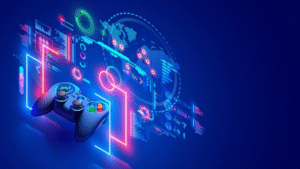
Blockchain technology has progressed far beyond powering cryptocurrencies like Bitcoin and Ethereum. Today, one of the most promising trends reshaping global markets is the tokenization of real-world assets (RWAs). From real estate and commodities to art and company shares, tokenization makes it possible to represent physical or traditional financial assets as digital tokens on a blockchain — bringing transparency, liquidity, and accessibility to markets that were previously complex and exclusive.
This rapidly growing concept is drawing interest from institutional investors, regulators, and individual crypto enthusiasts alike. As tokenized assets gain traction, more people are rethinking how to secure and manage their on-chain holdings. Naturally, this shift highlights the importance of choosing the best wallet for crypto that can handle both traditional tokens and new asset classes seamlessly and securely.
Why Tokenization Matters?
Historically, investing in assets like real estate, fine art, or private equity has been limited to large institutions or high-net-worth individuals due to high entry costs, complex legal requirements, and illiquid secondary markets. Tokenization democratizes access by dividing ownership into smaller, tradable digital units — allowing anyone to invest fractional amounts.
According to a 2023 report by Boston Consulting Group, the tokenized asset market could reach $16 trillion by 2030, representing roughly 10% of global GDP. Financial institutions and governments are taking notice, with pilot programs and regulatory sandboxes emerging worldwide to test these new models.
How Tokenization Works?
At its core, tokenization involves creating a digital representation of a physical or off-chain asset and recording it on a blockchain. This process generally includes:
-
Asset Selection and Legal Compliance: Identifying the asset and ensuring that local laws allow fractional ownership and transferability.
-
Issuance of Tokens: Using smart contracts to mint tokens that represent ownership shares or rights to the underlying asset.
-
Custody and Settlement: Safely storing the real-world asset (like storing gold in a vault) and providing mechanisms for token holders to claim or redeem their share.
-
Trading and Liquidity: Listing tokens on regulated exchanges or decentralized marketplaces to allow peer-to-peer transfers and trading.
This framework provides trustless, borderless ownership transfer, reduces the need for intermediaries, and cuts costs typically associated with brokers, paperwork, and manual settlement.
Real-World Examples Gaining Traction
Tokenization is no longer just a buzzword — several high-profile projects are showing how practical and lucrative it can be:
-
Real Estate: Platforms like RealT and Brickblock allow investors to purchase fractional shares in rental properties, earning proportional rental income.
-
Commodities: Companies such as Paxos and Tether have launched gold-backed tokens, enabling investors to buy and sell fractions of a gold bar without the hassle of physical storage.
-
Equity and Private Markets: Equity token offerings (ETOs) let startups raise funds by selling tokenized shares, providing liquidity for early investors and employees.
-
Art and Collectibles: Tokenization has also entered the fine art market, with projects allowing investors to own a stake in valuable paintings or rare collectibles, which can be traded on secondary markets.
These examples demonstrate that tokenization isn’t just a futuristic concept; it’s reshaping ownership models right now.
Benefits for Investors and Issuers
For Investors:
-
Fractional Ownership: Buy only a portion of an expensive asset, lowering barriers to entry.
-
Liquidity: Trade previously illiquid assets on global marketplaces 24/7.
-
Transparency: Blockchain’s immutable ledger ensures clear ownership history and reduces fraud.
-
Diversification: Investors can build a diverse portfolio across multiple asset classes with small amounts of capital.
For Issuers:
-
Access to Global Capital: Attract investors from around the world without traditional geographic or bureaucratic restrictions.
-
Cost Efficiency: Reduce administrative overhead and intermediaries.
-
Improved Settlement: Smart contracts enable instant, automated settlement and dividend distribution.
Regulatory Considerations
Tokenization sits at the intersection of blockchain innovation and traditional financial regulation. Many governments are actively developing frameworks to clarify how tokenized assets should be classified and governed. For example, Switzerland, Singapore, and the United Arab Emirates have made strides in creating clear regulations to attract tokenization startups and institutional players.
Compliance remains a challenge, though. Issuers must ensure that tokenized securities comply with Know Your Customer (KYC) and Anti-Money Laundering (AML) rules, investor protection laws, and local jurisdiction requirements. Regulatory clarity will be a major factor determining how fast tokenization scales globally.
Challenges and Risks
While the promise of tokenization is huge, it’s not without hurdles:
-
Legal Complexity: Ownership rights must be enforceable in courts. Bridging the gap between digital tokens and real-world legal frameworks is still evolving.
-
Custody of Physical Assets: Ensuring that the physical or traditional asset backing the token remains secure and audited is critical.
-
Market Adoption: Many institutional investors are cautious due to unfamiliarity with blockchain and concerns over volatility.
-
Technical Security: Smart contract vulnerabilities can expose investors to hacks or loss of funds.
Addressing these challenges will require robust technological standards, trusted custodians, and clear legal agreements between all parties involved.
The Future Outlook
Market experts predict that tokenization will become a standard part of the global financial system within the next decade. Leading investment banks, asset managers, and fintech firms are already experimenting with blockchain to digitize everything from bonds to real estate.
Decentralized finance (DeFi) platforms are also exploring how to integrate tokenized RWAs into protocols, creating new yield opportunities for crypto holders and bridging the gap between traditional and decentralized markets.
For retail investors, this means more diverse opportunities and greater control over how, when, and where they invest their money.
How to Get Involved?
Interested in exploring tokenized assets? Here are a few steps to get started responsibly:
-
Do Your Research: Understand the specific project and the underlying asset. Read whitepapers and verify the reputation of issuers.
-
Check Regulations: Make sure you comply with local laws when investing in tokenized securities or commodities.
-
Use Trusted Platforms: Choose reputable exchanges or platforms that adhere to regulatory standards and provide robust security.
-
Secure Your Tokens: Store your digital assets in a reliable crypto wallet that supports diverse token standards and provides top-notch security.
Final Thoughts
Tokenization is unlocking trillions in previously illiquid value and pushing the boundaries of what’s possible in global investing. While challenges remain, the benefits for transparency, efficiency, and inclusivity make it one of the most exciting trends in blockchain today.
As more investors and institutions embrace this evolution, staying informed and secure will be essential. Keeping an eye on tokenized markets could be one of the smartest moves for crypto enthusiasts looking to diversify and grow their portfolios in the coming years.







